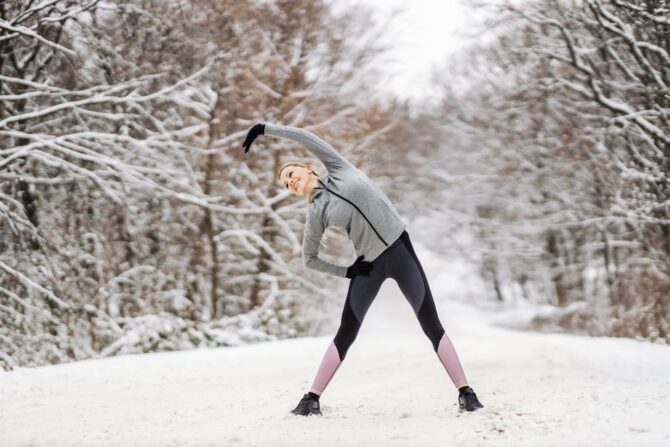Endurance racing is a physically demanding and mentally grueling sport. From marathons to triathlons and ultra-marathons, these tests of human endurance push athletes to their limits. However, the challenge becomes even more formidable when compounded by extreme weather conditions. Whether it’s the searing heat of a desert ultramarathon or the biting cold of a winter Ironman, competitors must adapt their training to succeed regardless of the climate. Kevin Morgan of Pittsford, NY, offers strategies to help athletes tailor their training regimens to perform optimally across the seasons.
Understanding the Impact of Weather on Performance
Weather conditions significantly affect physical performance and the body’s mechanisms for energy production, hydration, and temperature regulation. Heat can lead to increased heart rate, dehydration, and heat exhaustion. Conversely, cold weather can cause hypothermia, frostbite, and muscle stiffness. Both of these extremes demand specific training adaptations to mitigate risks and enhance performance.
Training in Hot Weather
- Hydration Strategy: Training in heat increases sweat loss, necessitating a robust hydration strategy. Begin hydration well before thirst sets in and continue to hydrate post-training to adequately replenish lost fluids. Be sure to incorporate electrolyte supplements into your regimen to replace salts lost through sweat.
- Acclimatization: Gradually increase the duration and intensity of workouts in hot conditions over two weeks. This period allows the body to adapt to the heat, improving your blood plasma volume and sweat rate, which aids in cooling the body more efficiently.
- Clothing and Gear: Wear light-colored, loose-fitting, and breathable clothing to help reflect heat and promote air circulation. A hat and UV-protective sunglasses are also essential to shield against direct sunlight.
- Timing Your Training: Avoid training during the peak heat of the day. Early morning or later evening workouts are preferable when the temperature is relatively cooler.
Training in Cold Weather
- Layering: The key to training in cold conditions is layering. Always start with a moisture-wicking base layer to keep your skin dry. Add an insulating layer to retain body heat, and top it with a windproof and waterproof outer layer to protect against the elements.
- Warm-Up: Extend your warm-up period to prepare your muscles and joints thoroughly. Cold weather can make muscles stiff and more prone to injuries, so a gradual and longer warm-up is crucial.
- Footwear: Choose shoes with less mesh to prevent cold air and water from reaching your feet. Consider traction devices if training in snowy or icy conditions to prevent slips and falls.
- Skin Protection: Cold air can be unforgiving and harsh on exposed skin. Use a thick, breathable balm to protect your face and lips from frostbite. Cover as much exposed skin as possible with clothing, hats, and gloves.
Training in Windy and Rainy Conditions
- Aerodynamic Posture: When training in windy conditions, adopt a more aerodynamic posture to reduce wind resistance. This means leaning slightly into the wind and keeping your body more compact.
- Waterproof Gear: Invest in quality waterproof gear, including jackets, pants, and hats. These help keep you dry and maintain body temperature, which is crucial for avoiding hypothermia.
- Safety and Visibility: Rain and wind can reduce visibility, both for you and those around you, such as drivers. Wear bright, reflective clothing and use lights when training in the early morning or late evening.
Cross-Training and Indoor Alternatives
- Cross-Training: Incorporate cross-training activities that can be performed in more controlled environments. Swimming, cycling on stationary bikes, and running on treadmills can help with maintaining fitness without the risks associated with extreme weather conditions.
- Strength Training: Try including strength training in your regimen. It increases muscle endurance and overall strength, making you more resilient to the stresses of extreme weather.
Mental Preparation
- Visualization: Regularly visualize completing your race in various conditions. This mental practice can help prepare you for the unpredictability of weather on race day.
- Flexibility and Adaptability: Be prepared to modify your training plan according to the weather. Flexibility in training ensures that you maintain consistency without risking injury or illness from adverse conditions.
Nutrition for Extreme Conditions
- Hot Weather: Focus on light, water-rich fruits and vegetables to help hydration. Avoid heavy meals that can increase metabolic heat during digestion.
- Cold Weather: Increase your intake of calories, particularly from fats, which are vital for maintaining energy and body heat.
Training for endurance races in extreme weather conditions demands not only physical preparation but also an adaptive strategy that addresses hydration, clothing, safety, and nutrition. By understanding these elements and preparing accordingly, athletes can enhance their performance and safety, ensuring that no matter what the weather brings, they are ready to compete at their best.
